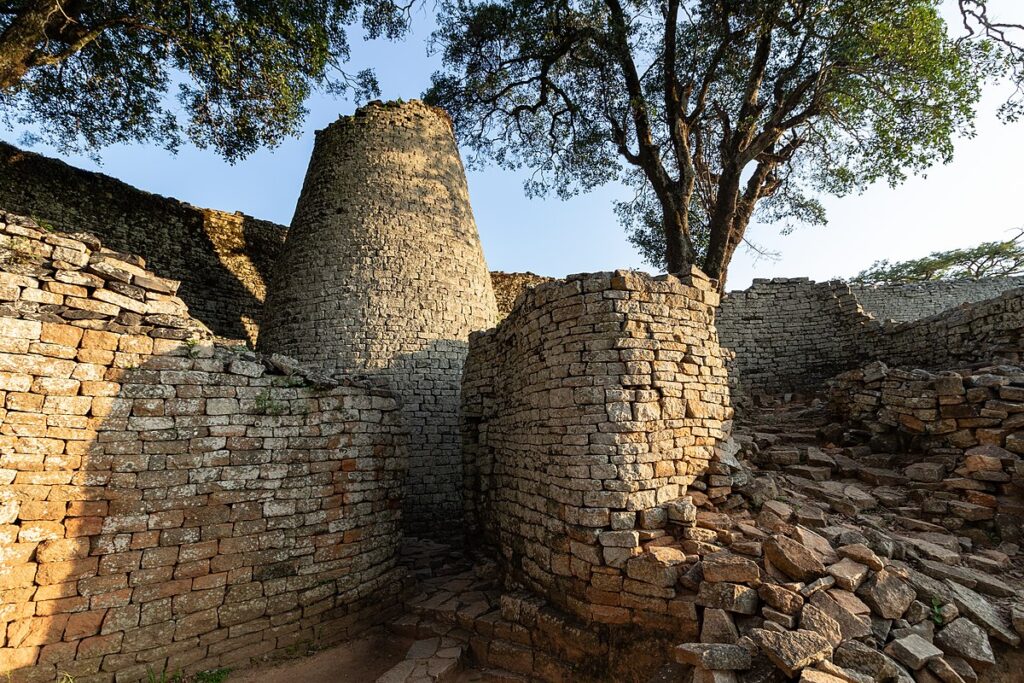Nestled in the heart of southern Africa, the Great Zimbabwe National Monument is a testament to the ingenuity and architectural prowess of the ancient Shona civilization. This UNESCO World Heritage Site offers a fascinating glimpse into a bygone era, where stone structures and ruins tell stories of a once-thriving kingdom. Whether you’re a history enthusiast or simply curious about Africa’s rich past, Great Zimbabwe is a must-visit destination that promises to captivate and inspire.
What to See at Great Zimbabwe
The Great Zimbabwe National Monument is renowned for its impressive stone ruins, which are divided into three main areas: the Hill Complex, the Great Enclosure, and the Valley Ruins. The Hill Complex, perched atop a granite hill, offers breathtaking views of the surrounding landscape and is believed to have been the royal residence. The Great Enclosure, the largest ancient structure in sub-Saharan Africa, features a massive stone wall and conical tower, showcasing the architectural brilliance of its builders. The Valley Ruins, scattered across the site, provide further insight into the daily lives of the people who once inhabited this area.
As you explore the site, you’ll encounter intricately carved soapstone birds, which are thought to have held spiritual significance. These iconic sculptures are a symbol of Zimbabwe’s cultural heritage and are featured on the national flag. The museum on-site offers additional context, displaying artifacts and providing information about the history and significance of Great Zimbabwe.
A Bit of History and Interesting Facts
Great Zimbabwe was the capital of the Kingdom of Zimbabwe during the Late Iron Age, flourishing between the 11th and 15th centuries. It served as a political and economic hub, with trade networks extending as far as China and the Middle East. The name “Zimbabwe” is derived from the Shona phrase “dzimba dza mabwe,” meaning “houses of stone,” reflecting the impressive stonework that characterizes the site.
One of the most intriguing aspects of Great Zimbabwe is its construction. The builders used a technique known as dry-stone walling, where stones are carefully stacked without the use of mortar. This method not only demonstrates the skill of the ancient builders but also contributes to the site’s enduring stability.
Despite its historical significance, Great Zimbabwe was largely unknown to the outside world until the late 19th century. Since then, it has become a symbol of African pride and resilience, attracting visitors from around the globe.
Getting There and Tips for First-Time Visitors
Great Zimbabwe is located near the town of Masvingo, approximately 30 kilometers away. The most convenient way to reach the site is by car, with well-maintained roads connecting Masvingo to major cities like Harare and Bulawayo. For those relying on public transport, buses and taxis are available from Masvingo to the monument.
When visiting Great Zimbabwe, it’s advisable to wear comfortable walking shoes, as the terrain can be uneven. The site is expansive, so allow plenty of time to explore and take in the surroundings. Guided tours are available and highly recommended, as they provide valuable insights into the history and significance of the monument.
For first-time visitors, it’s worth noting that the climate can be quite warm, especially during the summer months. Be sure to bring sunscreen, a hat, and plenty of water to stay hydrated. The site is open daily, with an entrance fee that contributes to the preservation of this important cultural landmark.








